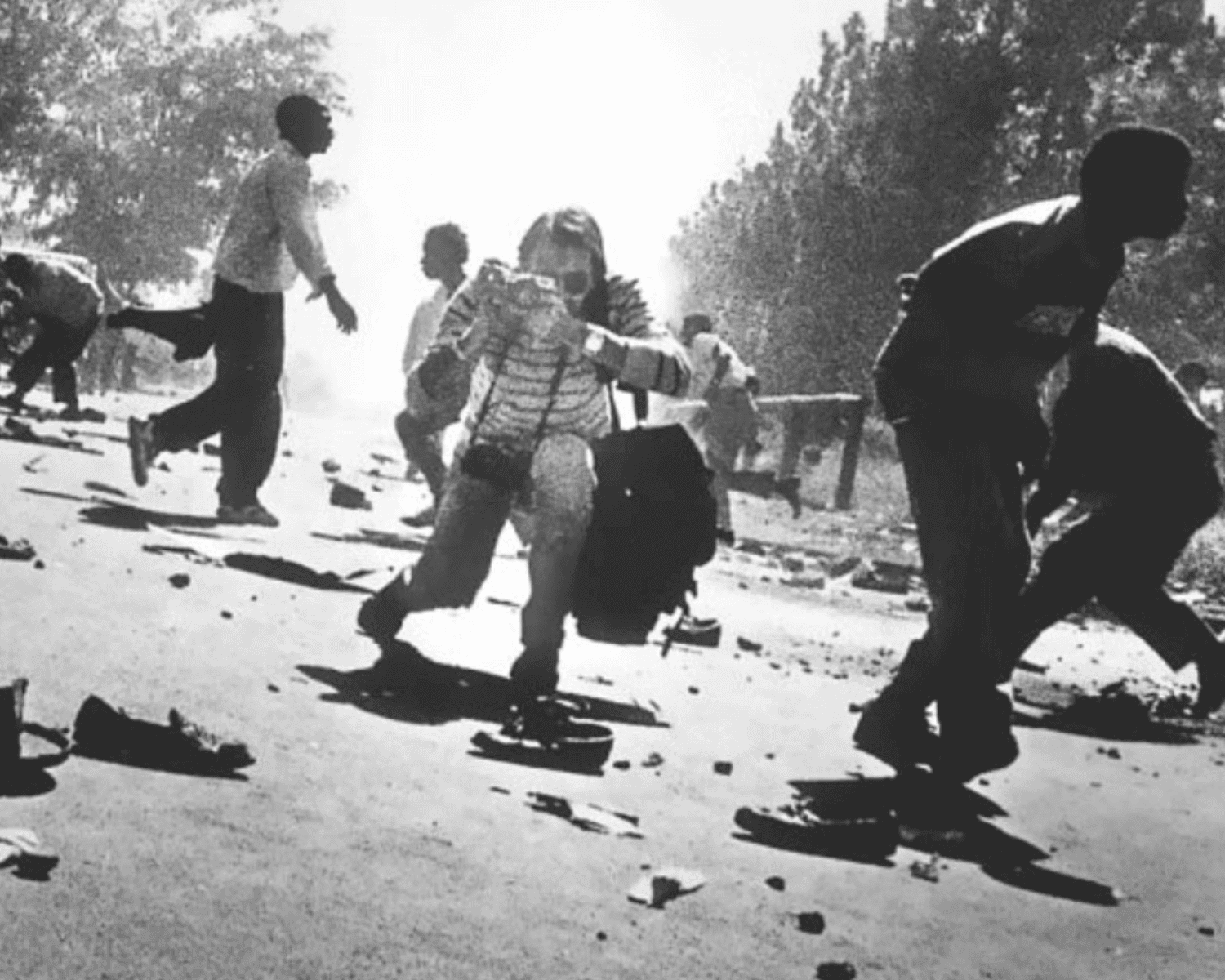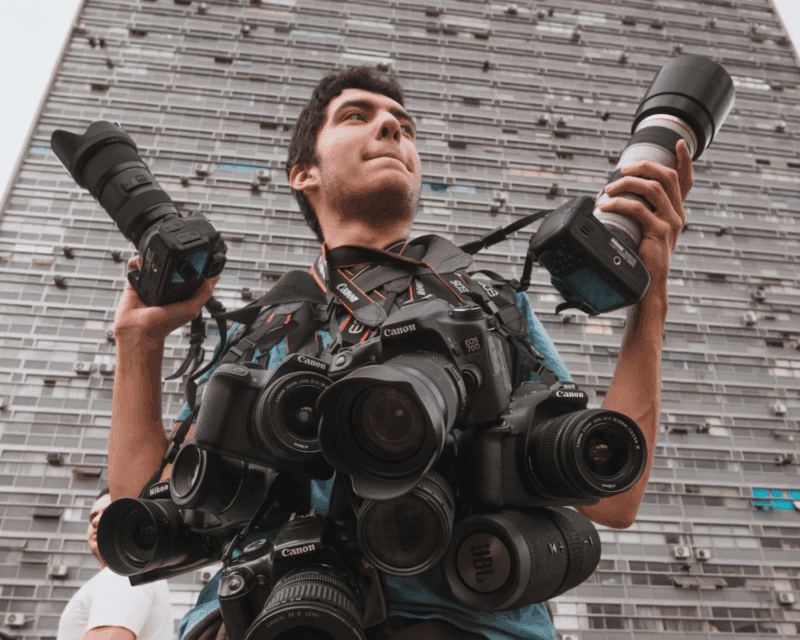Ten Photographs that Changed the World
Yvan Cohen
Fri Jul 21 2023
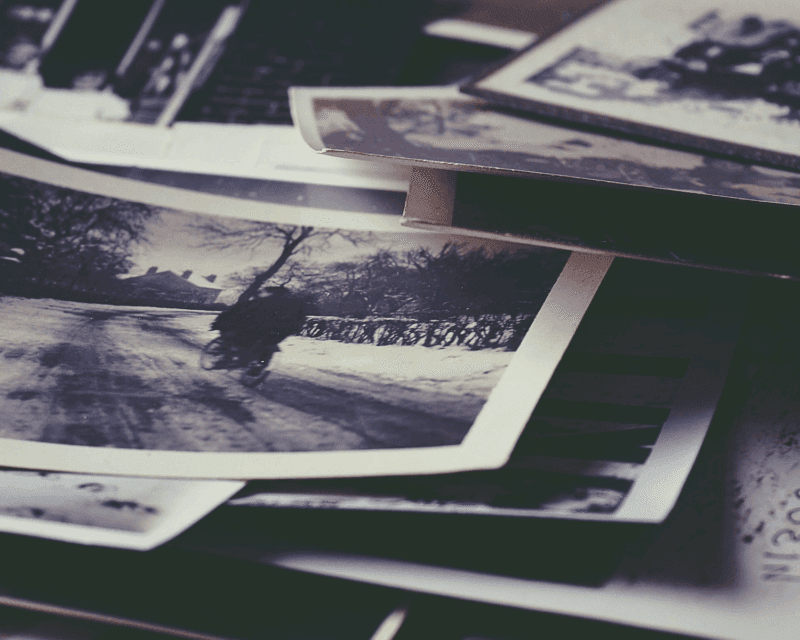
By Yvan Cohen
After such a bold title, the first question one might fairly ask is can photographs change the world? Perhaps the simplest answer, somewhat obviously, is that if they can’t change the world, they can certainly change how we see the world.
Unlike words, with their need for grammatical rules and their slippery meanings, pictures can be understood in the literal blink of an eye. As infants, even before we have uttered a single word, we are making sense of the world through our eyes.
It is our instinctive reaction to what we see, filtered through layers of experience, education and culture, that has given photography such a powerful place in our lives.
The following list of photographs is by no means definitive and is inevitably subjective. Nevertheless, it is fair to say that, to a greater or lesser degree, all of these images have embedded themselves in the public consciousness, and all have in some way helped shape our understanding of photography and the world.
Migrant Mother – Dorothea Lange (1936)
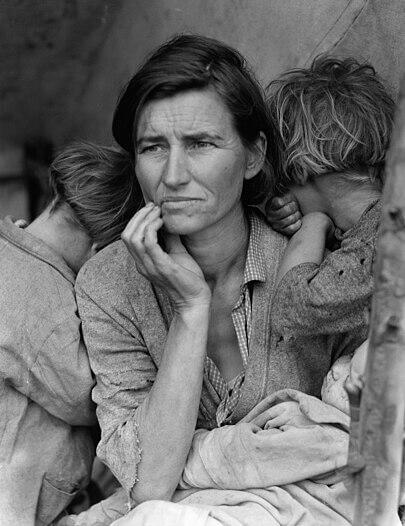 Photo by Dorothea Lange
Photo by Dorothea Lange
Taken in 1936, Dorothea Lange’s image perfectly encapsulates both the dignity of her subject and a deep sense of desperation. Framed by her children, brow furrowed, clothes threadbare, Lange’s Migrant Mother suggests an epic struggle and yet conveys the tenderness and intimacy of motherhood. It is both intensely human and powerfully symbolic.
Migrant Mother has become an iconic reminder of the destitution and poverty visited on so many ordinary families in the wake of the Great Depression. It is a reminder, too, of the very real human consequences when economic policies go wrong and economies collapse.
Napalm Girl – Nick Ut (1972)
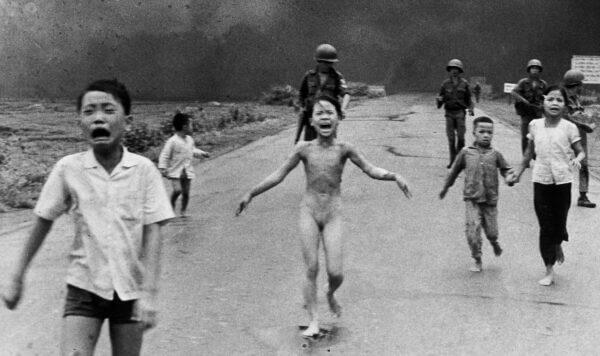 Photo by Nick Ut
Photo by Nick Ut
Arguably, Vietnam was the first war where the power of photojournalism came to the fore. The second world war had been extensively photographed but the immediacy of the coverage in Vietnam and the volume of images published, transformed Vietnam into a war that played out in the full glare of the public eye.
There are many iconic images of the Vietnam War, but Nick Ut’s Napalm Girl stands out as the picture that most viscerally describes the awfulness of such conflicts. His photograph of a naked girl (Kim Phuc) running along a road, arms outstretched, screaming in pain and fear, inspires revulsion and horror while conveying the absolute injustice of war.
Seared into our collective consciousness, the terror and helplessness of the Napalm Girl is a reminder of why war is never glorious and always brutal – no matter how the propagandists may try and spin it.
Raising the Flag at Iwo Jima – Joe Rosenthal (1945)
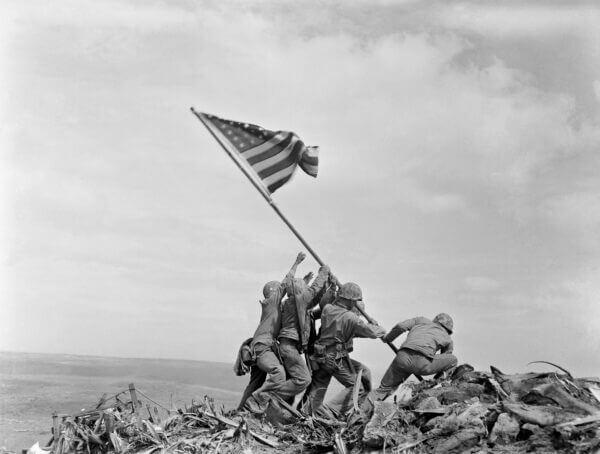 Photo by Joe Rosenthal
Photo by Joe Rosenthal
Having just said that no war is ever glorious, Joe Rosenthal’s Pullitzer Prize-winning image of American troops raising the US flag in Iwo Jima seems convey just that…a sense of glorious triumph in a struggle against all odds.
Almost propagandist in nature, the image has become iconic both as an image of American victory, and as a portent of impending American military supremacy. If Napalm Girl is a perfect anti-war picture Raising the Flag at Iwo Jima, seems to glorify battle. Amazingly Rosenthal almost missed the shot and actually took the photo in such a hurry that he didn’t have time to look through the viewfinder.
“When you take a picture like that, you don’t come away saying you got a great shot. You don’t know,” Rosenthal recalled.
The Falling Soldier – Robert Capa (1936)
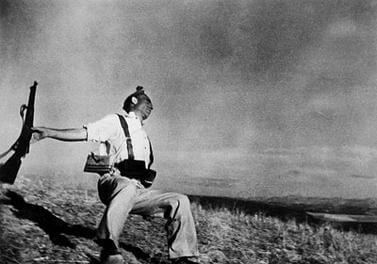 Photo by Robert Capa
Photo by Robert Capa
Taken in 1936 during the Spanish Civil War, Robert Capa’s image of the Falling Soldier apparently captures the moment a soldier is struck by a bullet. At the time, it was considered an astonishing example of how photography could literally record the split-second reality of death in combat.
Despite being heralded as one of the most iconic war photographs ever taken, Capa’s Falling Soldier has since become mired in controversy with some researchers claiming the photograph was actually staged.
Perhaps the significance of Capa’s Falling Soldier, therefore, is less as a war photograph and more as an early example of the role that photography could play in accurately recording aspects of human life, including war, that had hitherto been invisible to the general public.
Capa’s Falling soldier is thus a forerunner of modern photojournalism, a form of communication that melds art with the ethics of the documentarian, allowing us to become direct witnesses to history.
Tank Man – Jeff Widener (1989)
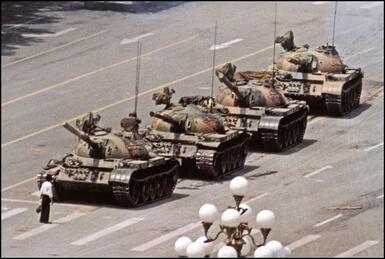 Photo by Jeff Widener
Photo by Jeff Widener
Jeff Widener’s image of a lone Chinese civilian blocking an advancing column of tanks in Beijing perfectly symbolizes courage, defiance and the injustice of repressive authoritarianism.
Dressed as if he had just left his office, wearing a white shirt and dark trousers, the ‘Tank Man’ as he has become known, also appears to be carrying shopping bags, a detail that further enhances his ordinariness while heightening the contrast with the monstrous machines bearing down on him.
‘Tank Man’ has become a totemic image for civilian resistance against armed repression, an example of how a single courageous act can become an emblem, and an inspiration, for anyone who dares to fight back.
The Vulture and the Little Girl – Kevin Carter (1996)
 Photo by Kevin Carter
Photo by Kevin Carter
It is impossible not to be profoundly moved by Kevin Carter’s image of a skeletal, famine-stricken child with a vulture lurking ominously in the background. Beyond highlighting the indiscriminate suffering wrought by the famine in Sudan, the image conveys a heart-wrenching sense of vulnerability. After its initial publication in the New York Times, the picture prompted an outpouring of support for humanitarian operations in Sudan.
Though Carter’s image won the prestigious Pullitzer Prize for Feature Photography (in 1994), it also became a focus for critics who accused the photographer of cynically exploiting the drama of the moment and indulging in ‘poverty porn’.
Kevin Carter, aged just 33 at the time and one of the world’s leading conflict photographers, took his own life just four months after winning the Pullitzer. His death highlighted the psychological trauma experienced by photographers documenting war and strife.
Carter’s image perfectly highlights the tension between the ability of photojournalism to influence public opinion and the painful moral dilemma faced by the photographers whose job it is to bear testimony to the darkest aspects of humanity.
Flower Child – Marc Riboud (1967)
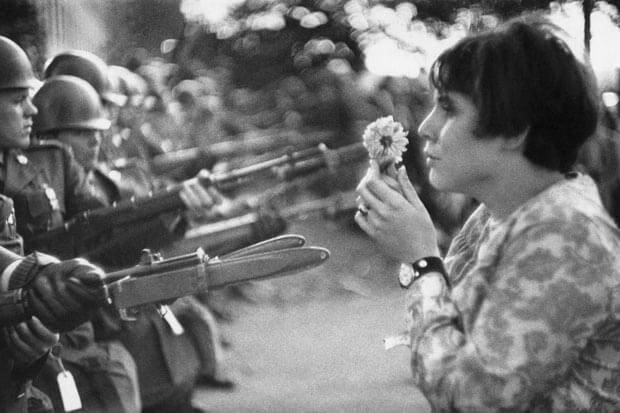 Photo by Marc Riboud
Photo by Marc Riboud
“Political power grows out of the barrel of the gun,” declared Mao Tse Tung. A few decades later, the hippy movement of the 60s and 70s promoted ‘flower power’ as a path to peace.
These two ideas appear to collide in Marc Riboud’s iconic 1967 image of a female protester holding a flower as she faces a line of guns and bayonets. It is an image that has become an icon for the flower power movement and peaceful opposition to the Vietnam war.
John Lennon and Yoko Ono – Annie Liebovitz (December 8, 1980)
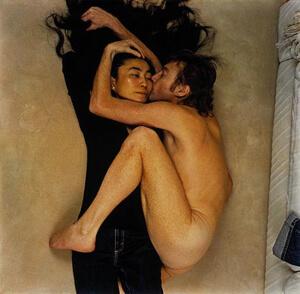 Photo by Annie Liebovitz
Photo by Annie Liebovitz
Annie Liebovitz’s image of a naked John Lennon curled around his wife, Yoko Ono, as they lie together on the floor feels like the full stop for the story of a generation.
The two were among the best-known icons of a musical, artistic and sexual revolution in the 1970s. Their lives and careers helped redefine our understanding public celebrity.
Liebovitz’s image is at once quintessentially modern and searingly primordial. It implies male dependence and vulnerability, upending traditional ideas of patriarchal power.
As fate would have it, the image gained further significance as it was taken just hours before Lennon was assassinated outside his New York home by Mark David Chapman. Liebovitz’s picture was published on the cover of Rolling Stone Magazine in January 1981.
The Falling Man – Richard Drew (September 11, 2001)
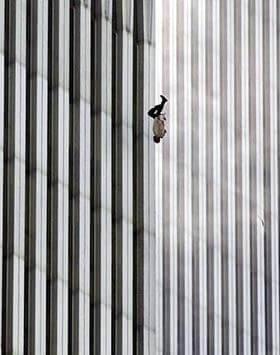 Photo by Richard Drew
Photo by Richard Drew
Simultaneously haunting, horrifying and disturbingly banal, Richard Drew’s image shows a man falling from one the World Trade Center’s twin towers shortly after the building was struck by a hijacked airliner.
Drew’s picture presents us with a single momentary detail of one man’s tragedy as he plunges to his death.
Though uniquely narrow in its depiction of the 9-11 attack, ‘Falling Man’ prompts us to reflect on the broader context of that day: leading us to imagine the events which immediately preceded this image and on the inevitable grim reality of the man’s fate, a few seconds later.
Drew’s image sears itself into our consciousness, rendering a vast catastrophe that has re-shaped modern history feel strangely personal.
Many of the most dramatic moments in modern history have seemingly been photographed from every angle and yet of each event there are but a few images which remain imprinted in the collective memory. Richard Drew’s Falling Man is one of those images.
Decisive Moment image of jumping over a puddle – Cartier Bresson (1932)
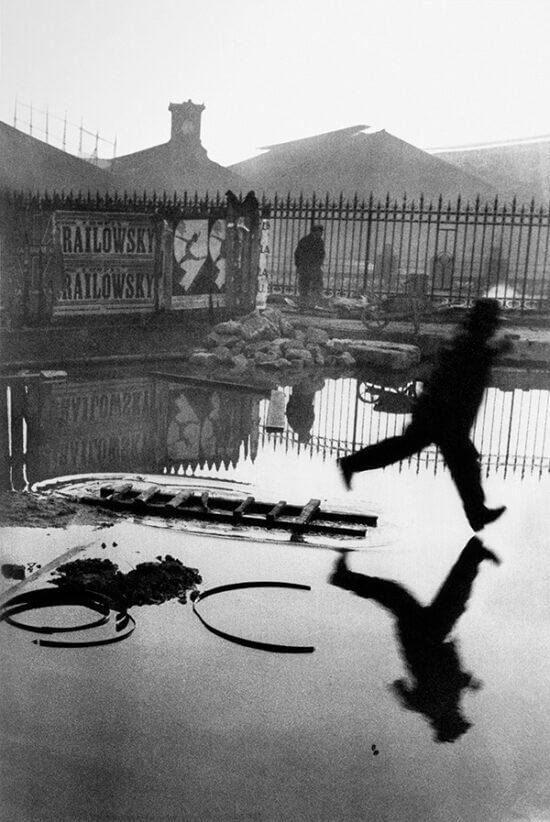 Photo by Cartier Bresson
Photo by Cartier Bresson
French photographer Henri Cartier Bresson is considered by many as the father of modern street photography.
Bresson’s description of what he called ‘the decisive moment’ has become a guiding concept for modern photographers, who still seek to imbue their images with visual power by learning to frame their images and press the shutter at exactly the right ‘moment’.
Not surprisingly, many of Bresson’s images are held up as examples of his ability to capture decisive moments as life unfolded around him.
His photograph of a man jumping over a puddle (also known as Behind the Gare St Lazare) is often held up as the best example of Cartier Bresson’s decisive moment theory put into practice.
The picture perfectly illustrates how Bresson is able to elevate an ordinary scene to thing of beauty, in this case giving his unknown subject balletic poise while transforming the picture’s banal urban setting into an image that conjures the mood and forms of a masterful abstract painting.
Written by Yvan Cohen | Yvan has been a photojournalist for over 30 years. He’s a co-founder of LightRocket and continues to shoot photo and video projects around South East Asia.
Cover image by Suzy Hazelwood
To read more helpful articles on photography, check out our blog page.
Join our growing photographer community at LightRocket and get powerful archive management and website building tools for free!
